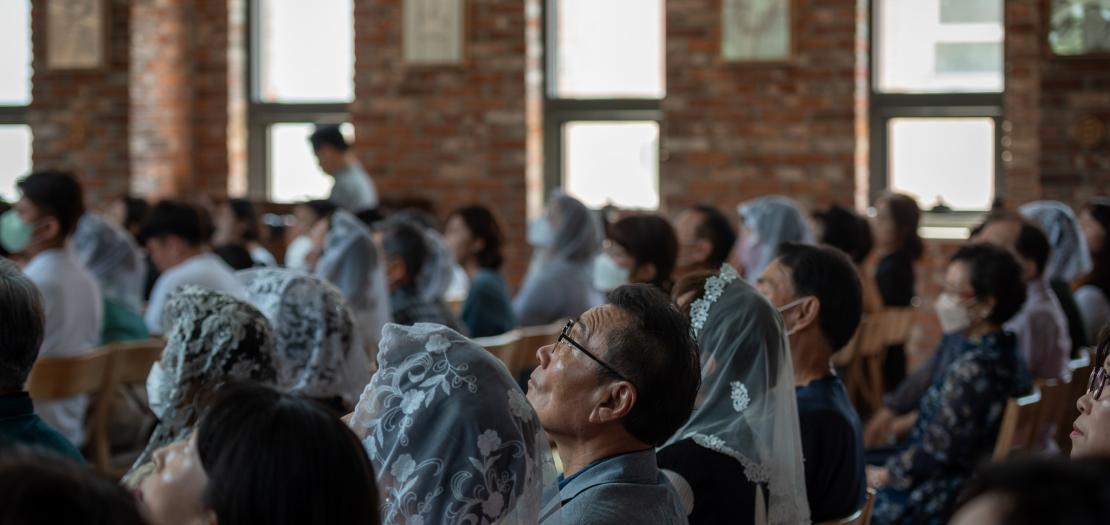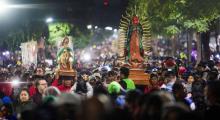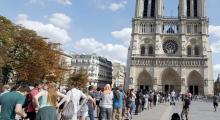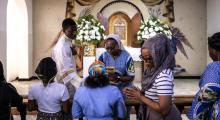Issued by the Catholic Center for Studies and Media - Jordan. Editor-in-chief Fr. Rif'at Bader - موقع أبونا abouna.org

South Korean Catholics
In 2024, over 58,000 baptisms were recorded—a 13.7 per cent increase from the previous year. This growth, fueled in part by adult converts and family baptisms, reflects a continued interest in Catholicism’s moral clarity and intellectual tradition, even amid a highly secularized society.
In a rapidly modernizing and increasingly secular South Korea, the Catholic Church remains a resilient yet quietly shifting force. As of 2024, nearly 6 million South Koreans—about 11.4 per cent of the national population—identify as Catholic, according to a newly released report from the Catholic Bishops’ Conference of Korea. While this marks steady growth in raw numbers, the data reveals a complex and evolving spiritual landscape shaped by demographic shifts, generational gaps, and deepening questions about the future of faith in East Asia’s most tech-driven merchandise
Perhaps most telling in the 2024 Statistical Report on the Catholic Church in Korea is the figure that just under 15 per cent of Korean Catholics regularly attend Sunday Mass. This represents a notable drop from past decades, suggesting that while affiliation may remain strong on paper, active participation is another story. The Church in South Korea is not shrinking—but it is aging and slowly becoming less central in the lives of younger generations.
The generational imbalance is clear: more than a quarter of Catholics are aged 65 or older, while only about 16 per cent are under 29. These figures echo broader demographic trends in South Korea, which has one of the world’s lowest birth rates and a rapidly aging population. But within the Church, the implications are particularly urgent. Fewer young people in pews now means fewer vocations, less catechesis, and potentially diminished influence in the cultural fabric of tomorrow’s Korea.
This generational drift is perhaps most visible in the waning attendance at Sunday schools: while over half of Catholic elementary students still participate (53.8 per cent, the numbers plummet in middle school (29.2 per cent) and further in high school (14.6 per cent). For a Church that has traditionally emphasized lifelong faith formation, such figures present a sobering challenge.
Nevertheless, the Church continues to grow. In 2024, over 58,000 baptisms were recorded—a 13.7 per cent increase from the previous year. This growth, fueled in part by adult converts and family baptisms, reflects a continued interest in Catholicism’s moral clarity and intellectual tradition, even amid a highly secularized society.
The clergy itself also shows a stable structure with subtle shifts. The country now has 5,751 clergy members, including two cardinals and 40 bishops. Korean priests dominate the ranks (5,578), but a modest presence of 131 foreign clergy highlights the Church’s increasing openness and international ties. The priesthood remains concentrated in middle age, with over half of all priests between 40 and 50 years old, suggesting a current strength that could face long-term strain if younger vocations do not increase.
At the same time, South Korea has emerged as a vibrant source of Catholic missionary outreach. Nearly 1,000 Korean missionaries are working across 64 countries—more than a quarter of them priests, but the majority composed of religious sisters. From the rural provinces of Zambia to the cities of Vietnam and the highlands of Peru, Korean Catholicism is expanding its reach with quiet persistence. Vietnam leads the list with 129 Korean missionaries, followed by the Philippines, Zambia, Japan, Indonesia, and China—countries where Korean missionaries often serve in difficult pastoral or educational settings.







